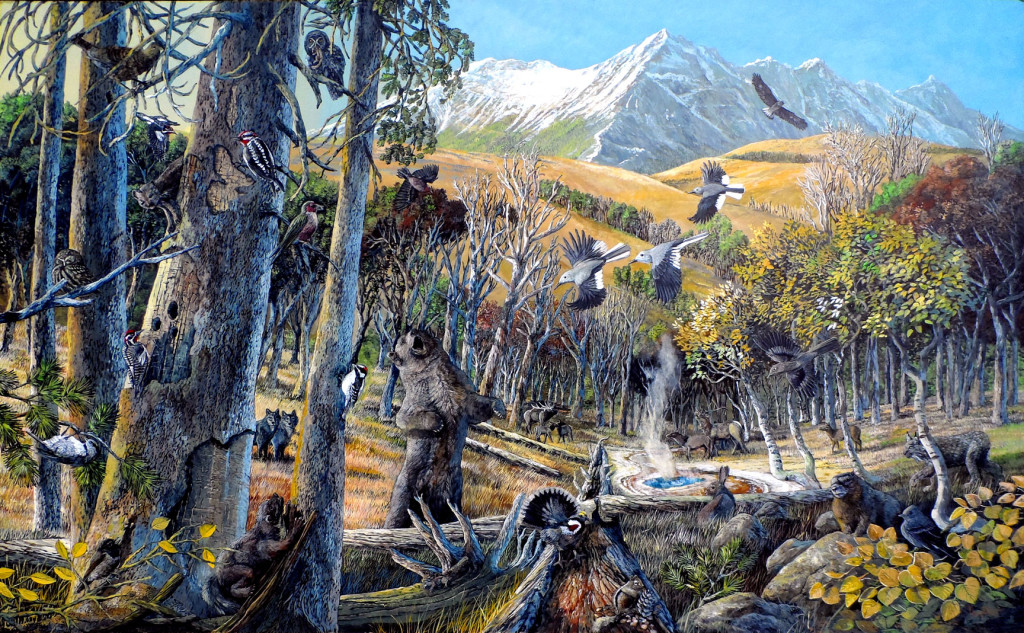
Commissioned by the Crater Lake Institute in 2013, this mural of decimated whitebark pine forests in Yellowstone National Park shows the ecosystem that’s being tragically effected by the decline of this keystone tree species.
| Whitebark Pines of YellowstoneEarly fall scene with fresh snow on mountain, elk with full rack, aspen leaves yellow. | |
| Species | Reason why it’s included |
| whitebark pine | keystone species for this painting. Show dead tree with beetle engravings, blister rust on live tree. |
| aspen | drying and warming climate threatens this species in Yellowstone. Requires summer ground water. |
| grizzly bear | Uses whitebark pine seeds for critical food |
| yellow-bellied marmot | Threatened with habitat change |
| elk | Warming climate = less food in summer |
| gray wolf | Wolves depend on elk |
| wolverine | Denning issues with future lack of snow |
| NO: gryfalcon | Flying – a cold-weather bird |
| Canadian lynx | Threatened species |
| Uinta chipmunk | Prey species for larger carnivores |
| American marten | Easily effected by prey species availability |
| snowshoe hare | Prey species for larger carnivores, depends on snow. |
| golden-mantled ground squirrel | Prey species for larger carnivores |
| great gray owl | Effected by lack of prey, requires cold temps. |
| boreal owl | An owl of the north |
| golden eagle | Requires prey species such as snowshoe hare |
| Williamson’s sapsucker | All listed woodpeckers will temporarily benefit from beetle expansion |
| Lewis’s woodpecker | See above |
| three-toed woodpecker | See above |
| Clark’s nutcracker | Feeds primarily on whitebark pine seeds. |
| mountain chickadee | May temporarily benefit from more insects and tree holes, but few conifer seeds. |
| White-breasted nuthatch | On whitebark |
| Western wood pewee | On aspen |
| Townsend’s solitare | flying |
| Dusky grouse | |

